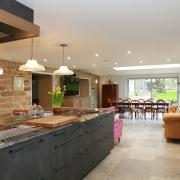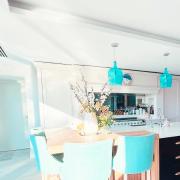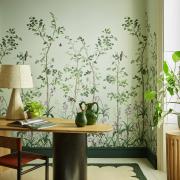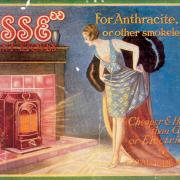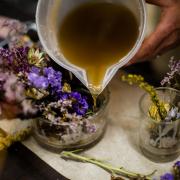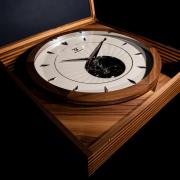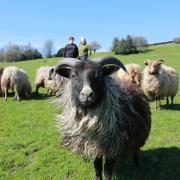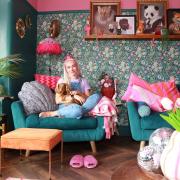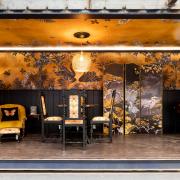A Bolton craftswoman who moved to the Lune Valley now has a foothold in the bespoke furniture market. Roger Borrell reports

If the word footstool conjures up an era when elderly relatives put their feet up and rhythmically snoozed off their Sunday lunches in time with the ticking of the clock, then Sue Marsden has news for you.

Footstools are suddenly in vogue. In fact, they are so fashionable that they’re no longer footstools but tuffets. Think Little Miss Muffet and her spider.
Tuffett, with an extra t, is the name Sue has given her business and her products, which are gaining a reputation among those looking for high quality furnishings with a difference.
She spent many years as a fundraising consultant, working on national projects as well as more local schemes such as Bolton Lads’ and Girls’ Club, the Windermere Steam Museum and Blackwell Arts & Crafts house near Bowness.
However, she reached the stage where she wanted to do something more creative. ‘I always enjoyed sawing and hammering – I was more or less prepared to have a go at making anything. I just wanted to satisfy this longing by trying try to make something beautiful.’
After moving with her partner from Rivington near her home town of Bolton to Wray in the Lune Valley, she took herself off to an upholsterer in Kendal where she learned from the experts.
It was while there that she had the idea for creating her own distinctive, bespoke furniture. ‘Footstool is a misnomer,’ said the Bolton School old girl. ‘Nowadays, there is a revival as they are used as centre-pieces in a drawing room or as coffee tables, a seat or a sofa bench.
‘I love working with wood and the legs on my Tuffetts are a work of art. They are hand turned by friend and neighbour William Lambert.’
They got together because Sue found ready-made legs were machined from cheap hardwood that had been dyed or painted. William uses oak that’s over 300 years old, beech that has been around for a century or more plus some specially-sourced sustainable mahogany.
She takes it from there, putting the pieces together using dowels and upholsters them in high quality fabrics that can be supplied by the customer or sourced by Sue. ‘They are unique items and I believe that I am the only person in the UK who is offering clients unlimited choice of size, height, fabric and leg design.’
Sue, who also breeds horses, launched the business in April last year and took her items around many of the north’s country fairs. Word got around and her tuffets are now sought by homeowners and interior designers with prices ranging from £50 to £225 (plus the cost of the fabric).
One of her most popular lines has been Tiny Tuffetts, small stools for children with their names embroidered on the cover.
‘I’m now making four or five pieces a week,’ she said. ‘I’m delighted by the way it has gone. We are now busy most of the week and I hope it stays that way. But I want it to stay small. That way, it remains fun.’
You can find out more at www.tuffett.co.uk. Thanks to Jon Brook at Bentham Imaging for the photography and to Jane Learmonth for styling the shoot.
Sue’s creations are not the sort of thing you want guests to plonk their size tens on. Apparently tuffets were originally distinguished from footstools because the cloth entirely covered the legs. Just to confuse things further, tuffet is also an old English measure equal to two pecks or half a bushel.
Now, a pouffe certainly is something you put your feet on and was originally French with the word implying something puffed up. You can almost see the Gallic shrug. The ottoman, on the other hand, originates – as the name implies – from Turkey and usually had a drawer for storage.




